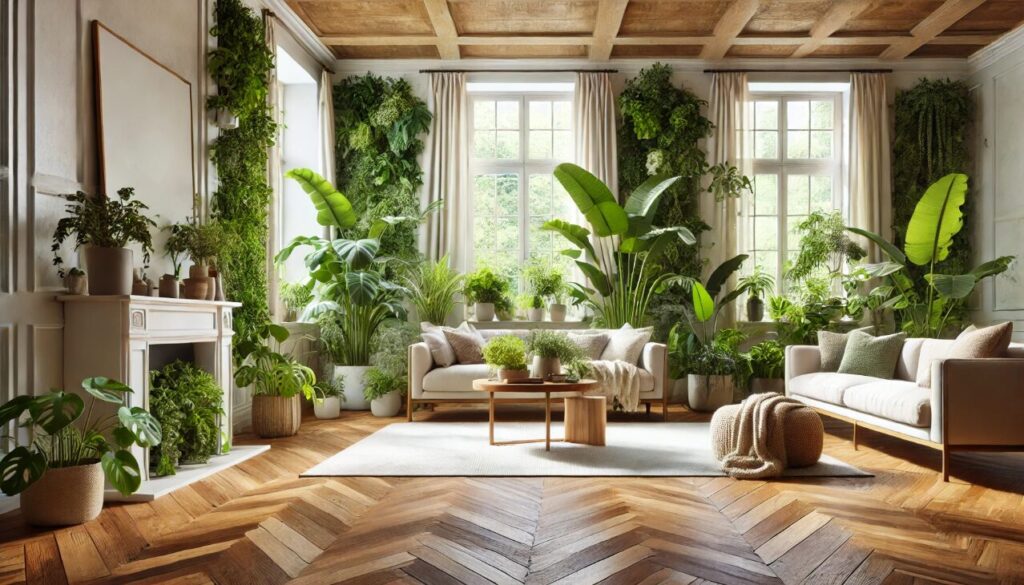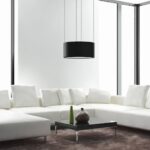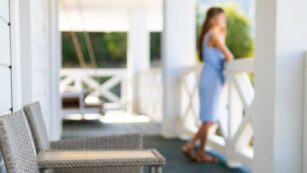
When it comes to flooring, many of us are on the hunt for options that not only look great but are also eco-friendly. After all, our homes should reflect our values, and sustainability is certainly a key priority today. Let’s explore three popular flooring choices that combine style, practicality, and environmental consciousness: engineered wood, solid wood, and luxury vinyl tiles (LVT).
Engineered Wood: Sustainability Meets Style
Engineered wood has taken the flooring world by storm, and for good reason. It’s made by layering a thin slice of real wood on top of high-quality plywood or fibreboard. This means you get the beauty of real wood while using fewer trees – a win for sustainability!
The manufacturing process for engineered wood is more efficient compared to solid wood, as it uses less of the valuable top-layer hardwood. Plus, it’s more stable, meaning it’s less likely to warp with temperature changes or humidity – perfect for our ever-changing UK weather! If you’re concerned about longevity, don’t worry. Many options can be sanded and refinished, though not as often as solid wood. Still, it’s a beautiful choice for bedrooms, living rooms, and dining spaces where you want that warm, classic wood look without the environmental impact.
Top tip: Engineered wood floors are particularly great for households like mine, with kids and dogs running around. It’s durable enough to handle muddy paws and the odd spilled drink!
Solid Wood: Timeless and Natural
When we think of luxury and natural beauty, solid wood often comes to mind. Unlike engineered wood, solid wood planks are made from a single piece of timber, making them a long-lasting option. Solid wood flooring can be sanded and refinished numerous times, ensuring it stays beautiful for decades, even in high-traffic areas.
However, while solid wood is undeniably stunning, it’s not always the most eco-friendly option. The harvesting process involves cutting down mature trees, which take years to replace. That said, you can still find sustainable choices by opting for wood certified by organizations like the Forest Stewardship Council (FSC). This ensures the wood comes from responsibly managed forests.
Solid wood also reacts to changes in temperature and humidity, so it’s best suited for areas like living rooms and bedrooms rather than kitchens or bathrooms.
My experience: While solid wood can be a bit of a splurge, it’s definitely worth considering if you’re planning to stay in your home for the long term. There’s something incredibly satisfying about knowing that the floor beneath your feet is 100% natural and built to last.
Luxury Vinyl Tiles (LVT): Eco-Friendly and Versatile
You might not think of vinyl when you hear the words “eco-friendly,” but modern LVT is changing that perception. Luxury vinyl tiles offer a versatile, stylish, and budget-friendly alternative to wood floors, while newer products have become far more environmentally friendly.
Many LVT options today are made from recycled materials and have low VOC (volatile organic compounds) emissions, making them a healthier choice for indoor air quality. LVT is also incredibly durable, easy to clean, and waterproof, making it a perfect choice for bathrooms, kitchens, and even homes with pets.
In fact, LVT can mimic the look of natural wood or stone, giving you the aesthetic benefits without the environmental impact of harvesting raw materials.
Why I love it: As a busy mum, I appreciate that LVT can withstand a lot of wear and tear. With its scratch resistance, it’s ideal for homes with young children or dogs (Cookie and Cream would agree!). Plus, installation is quick, and it’s a cost-effective option for families on a budget.
Choosing the Right Floor for Your Home
When choosing eco-friendly flooring, it’s important to weigh up the balance between sustainability, durability, and style. Engineered wood offers a perfect compromise between eco-consciousness and elegance. Solid wood gives you the luxury of nature beneath your feet, but it’s worth ensuring your choice is certified sustainable. And LVT? Well, it’s the dark horse of the flooring world – offering flexibility, durability, and a smaller carbon footprint than traditional vinyl.
Each option has its own benefits, but all three can be part of a greener home. With the right care and selection, you can enjoy beautiful flooring that’s kind to the planet and perfect for a busy household like mine.














